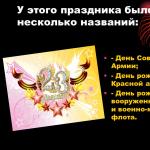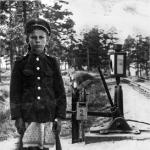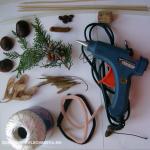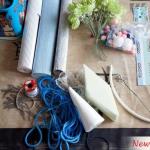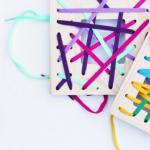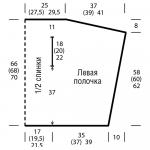Where to wear in Ukraine: designer shoes from the L.A.P.T.I. catwalk that everyone can buy. The oldest shoes in Rus' are bast shoes! Shoes l p t i
Last year, my wife brought a couple back from a trip to Europe. We liked the design and comfort of these shoes, and an idea immediately arose - why not apply the experience of the family business in the production of footwear equipment and create a bright fashionable shoes we have. From that moment on, we began traveling around Europe in search of suitable materials, creative experiments and samples of sewing Spanish espadrilles by Odessa craftsmen... Already at the first presentation we sold 42 pairs in one day and realized that L.A.P.T.I. are doomed to success and the love of connoisseurs of bright and high-quality shoes.
BRAND CONCEPT
.jpg)
Brand L.A.P.T.I. positions itself as the first street fashion style brand of designer shoes in Ukraine, which is sold at an affordable price and competes with Italian manufacturers in both quality and price.
RECOGNIZABLE DETAILS
.jpg)
You say - “ L.A.P.T.I.", you think - "slip-ons and espadrilles." Recognizable details are felt, thick Spanish soles, powder-colored and Marsala leather. Decorative details in the form of bows and voluminous folds used for designer slip-ons invented by the brand designer Irina Musatova.
BEST SELLING MODEL

Combined slip-ons in powder pink color made of felt and genuine leather with thick soles.
MATERIALS
The soles are brought from Spain and Italy from suppliers who produce soles for such famous brands as Valentino, Santoni, Maison Margiella. Also used genuine leather, felt, fur.
COLLABORATIONS WITH DESIGNERS
L.A.P.T.I. x KSENIA SCHNAIDER
L.A.P.T.I. x Anna K Happy Active Wear- ultra-fashionable models of slip-ons with edging made of French beads, which managed to walk down the catwalk at New York Fashion Week.
L.A.P.T.I. x Anna K x GAPCHINSKA Hapy Active Wear- collection of slip-ons with prints by GAPCHINSKA. These slip-ons also visited New York Fashion Week and are now presented in the Tomorrow showroom, Milan. A presentation of this collection was held at MBKFD, which was attended by world-famous fashion bloggers Eleonora Carisi and Nikolina Granik, top model Sisi Johnson, as well as Ukrainian celebrities and editors of fashion publications.
L.A.P.T.I. x ANNA K
L.A.P.T.I. x Ksenia Schnaider- a collection of slip-ons with the signature pixel Ukrainian print of Ksenia Schneider, who presented the collection at Paris Fashion Week this week.
L.A.P.T.I. x We Anna Be- a collaboration with a Ukrainian designer who created designer slip-ons with a unique design.
ADVANTAGES OF THE BRAND
L.A.P.T.I. x KSENIA SCHNAIDER
Founder Alexander Vernik personally goes to exhibitions and selects the highest quality materials in trendy colors and textures from the world's best suppliers from Milan, Paris, Barcelona, Alicante.
Strict quality control of every pair of shoes leaving production. Shoes are produced using German equipment on the basis of a full-fledged shoe factory.
Wide range: the presence of several designer collaborations and a basic, everyday line at lower prices.
A convenient and high-quality website where you can see all the news and learn about current promotions and brand new products, see new collection KseniaSchnaider slip-ons, which is about to go on sale.
The Italian company IMAC SpA was founded in 1975 by brothers David and Renato MAZZOCCONI as a workshop for sewing custom shoe uppers and soon established itself as a reliable partner for the largest Italian shoe manufacturers.
In the early 1980s, IMAC was converted into a shoe factory and began producing shoes using the direct injection molding method for attaching polyurethane soles, especially popular in the Nordic countries, which the company was targeting to expand its market.
Over the years, IMAC has acquired significant experience and developed its own know-how for the production of waterproof footwear (using a special patented method), which over time has become one of the “ business cards» companies.
Today IMAC has more than 1,400 full-time employees, of which 580 are in Italy. Another 7,050 people are indirectly employed in the group's 70 supplier companies located in 11 countries. The IMAC brand is focused on retail chains and is actively developing both in Italy and abroad. This was made possible thanks to significant investments aimed at developing new product lines that combine style, comfort and excellent value for money.
For over forty years, IMAC has been producing shoes with love and expertise. These qualities are reflected in the finished product, which has earned high recognition and is in great demand throughout the world. IMAC shoes offer versatility, comfort and excellent value for money.
The production of high-tech footwear for children is a separate area at IMAC.
The children's line of the IMAC brand is produced in accordance with the latest technologies, which guarantees maximum comfort and product quality. In the production of children's shoes, the Imac Tex membrane is used, which does not allow moisture to pass through and is breathable, thereby providing an ideal microclimate inside the shoes. Another feature of IMAC brand children's shoes is the use in the production of an antibacterial leather insole designed with an air cushion effect, which guarantees maximum comfort and stability when walking.
The entire range of children's shoes from the IMAC brand is distinguished by its bright and varied designs.
Today, IMAC is one of the world's leading manufacturers of children's shoes, thanks to its commitment to its core principles:
- Maintain a balance between Tradition and Innovation;
- Create quality shoes which provides growing legs with comfort and proper development helping to preserve and strengthen children's health;
- Maintain an affordable price level due to high level manufacturability and organization of production;
- Don't stop there, always keep the course on the development of Technology and Design in order to always offer the buyer comfortable, beautiful and inexpensive models of children's shoes.
The oldest shoes in Rus' are bast shoes!
Since ancient times, bast shoes were considered the most popular and widespread footwear among the Russian people. It was not for nothing that they said “bast-foot Rus'”. Moreover, wearing bast shoes applied not only to the poor or peasants; even city dwellers with little income could not afford anything other than bast shoes - boots were a distant and unrealizable dream for them.
Lapti are original Russian shoes; they have never been worn in any other country. Presented at the Paris World Exhibition in 1889, they created a real sensation, becoming perhaps its main decoration.
What were ancient shoes made of?
Often the material used for bast shoes was linden bark; in rare cases, the bark of oak, willow, elm, and other things was used. They tried to make bast shoes for daily wear as durable as possible, for which they used a wide bast, onto which soles were attached, which were subsequently braided with hemp ropes or thin oak strips, previously soaked in boiling water.
For insulation and additional strengthening, hemp rope was added to the sole - this saved not only from freezing, but also from getting wet feet.
For mowing work, special bast shoes were used that did not allow water to pass through - crustaceans. Bast shoes made from ropes were called chuns - they were used in hot and dry periods. Some craftsmen managed to make shoes from horse hair - they were called volosyaniki.
Village fashionistas wore bast shoes made of the finest elm bast, complemented by onuchas and frills in black wool. They were considered the most attractive - during production they were kept in boiling water, due to which the material not only hardened, but also acquired a pink tint.
Housework was done in wicker feet, which looked like tall galoshes. They were always left at the entrance to the house so that they could be quickly put on if necessary. This was especially true in autumn or spring period when there is a lot of dirt around, and putting on ordinary bast shoes took too much effort and time.
Initially, bast shoes were made separately for each leg. But over time, having adopted the experience of the Tatars, Chuvash and other nationalities, they began to make identical shoes in Rus', which was quite convenient and practical - there were no problems with replacing worn-out bast shoes.
Bast shoes were suitable for wearing at any time of the year, regardless of weather conditions. Wraps made of wool, cloth or canvas were placed under them. To hold the bast shoes on the leg, frills were used - narrow straps made of leather or hemp rope (Mochentsy), which encircled a person’s leg up to the knee.
Bast shoes were quite cheap - literally a few kopecks, which significantly affected their popularity and prevalence among the population. But they didn’t last very long - in winter up to 10 days, in summer no more than four. But replacing them was not a problem, so no one took special care of these shoes.
Lapot, bast, you tell me...
Lapti were participants in a large number of superstitions. And, you know, people really believed it. Or maybe Epiphany fortune telling came from there, huh?
- Many believed that their presence in the chicken coop could protect chickens from illness and increase their egg production.
- There was also an opinion that thanks to bast fumigation, the cow after calving would be strong and produce good milk yield.
- During dry weather, it was customary to throw sandals with woodlice inside into the water - it was believed that this would help attract rain.
- IN family rituals also could not do without bast shoes. It was customary to throw it after the matchmaker going to the matchmaking party - this attracted good luck.
- Before the newlyweds returning after the church ceremony, children burned bast shoes with straw inside, which not only protected them from troubles and bad weather, but also ensured wealth and happiness.
One of the most common types of shoes in Rus' were bast shoes. They can be made from almost any material. Any peasant could make bast shoes for himself and his family. Their advantages are obvious: they “breathe,” they don’t rub your feet, and you can’t get calluses in them. And the festive painted bast shoes were also beautiful. Their only drawback is their short service life. The bast wore out and was worn out quite quickly. The bast shoes became unusable in 3–4 days.
Bast bast shoes
How bast shoes were woven in the old days
Bast shoes have always depended on the place in which they were created. Externally, shoes from different provinces could be distinguished by the type of weaving and materials. They were woven from all types of bark suitable for knitting, but bast shoes made from linden bast were more prized than others. In the northern regions they used birch bark; in the south one could find shoes made of elm and oak. Willow models were considered the cheapest. The names of each type of bast shoes came from the material: elm, broom, hair. Another type of everyday bast shoes is feet. It was convenient to work in the yard in them, as they were easy to put on bare feet and did not require tying. Such bast shoes stood at the threshold of the hut and made it possible to quickly go to the hay barn, barn or chicken coop.

Russian bast shoes
There were several types of weaving bast shoes: straight lattice, oblique lattice, crustaceans (rare weaving for rainy weather). Bast shoes were divided according to the number of stripes that were used in production - 5, 6 or 7. The more stripes, the denser the lattice and the warmer the shoes. For better thermal insulation, the sole was lined with leather or bast shoes were woven in two layers. Such techniques not only insulated the models, but also made them more durable and beautiful.
In addition to the fact that bast shoes were the everyday shoes of the peasantry, there were festive models that were decorated different ways. They were woven from the finest bast, cut into smaller strips to create a unique pattern. During production, they were woven with painted stripes and colored threads - the materials depended on the imagination and experience of the craftsman. Such shoes were expensive and were worn only in special cases- for a wedding or major patronal feasts, as well as for a fair or in the city.
Who wore bast shoes and when?
The first mentions of bast shoes date back to the 10th century. Even then, peasants prepared shoes not only for personal use, but also for exchange, because not all regions grew suitable trees and there were masters. So these shoes spread to the territory inhabited by the Slavs and became traditional for them.
The peasantry valued everything positive traits bast shoes, because they had to spend whole days in the field, where the comfort of shoes is of particular importance. High-quality bast shoes did not rub their feet, dried quickly in rainy weather, and their cost was so low that even the poorest farmers could afford them. In almost every family, men knew how to weave bast shoes; boys learned this from childhood. While bast shoes were the favorite footwear among farmers, artisans and city dwellers practically did not wear them, and there was nowhere to make them in the city. Therefore, such popular peasant shoes did not become widespread in large settlements. For many centuries, until the beginning of the 20th century. bast shoes were considered not only comfortable shoes, but also a symbol of Rus', because the Slavs, for the most part, lived in villages and worked with the land.
Lapti in our time
Nowadays bast shoes can only be found in souvenir shops. There are practically no real masters left, and shoes in their traditional form, suitable for wearing, are not easy to find. But there are analogues of bast shoes from various materials: from raffia, birch bark, pine needles and even newspaper tubes. Designers create many interesting and colorful models from different fibers that have durability and interesting texture.

Souvenir bast shoes made from newspaper tubes

.JPG)
.JPG)
(1).JPG)
(1).JPG)
